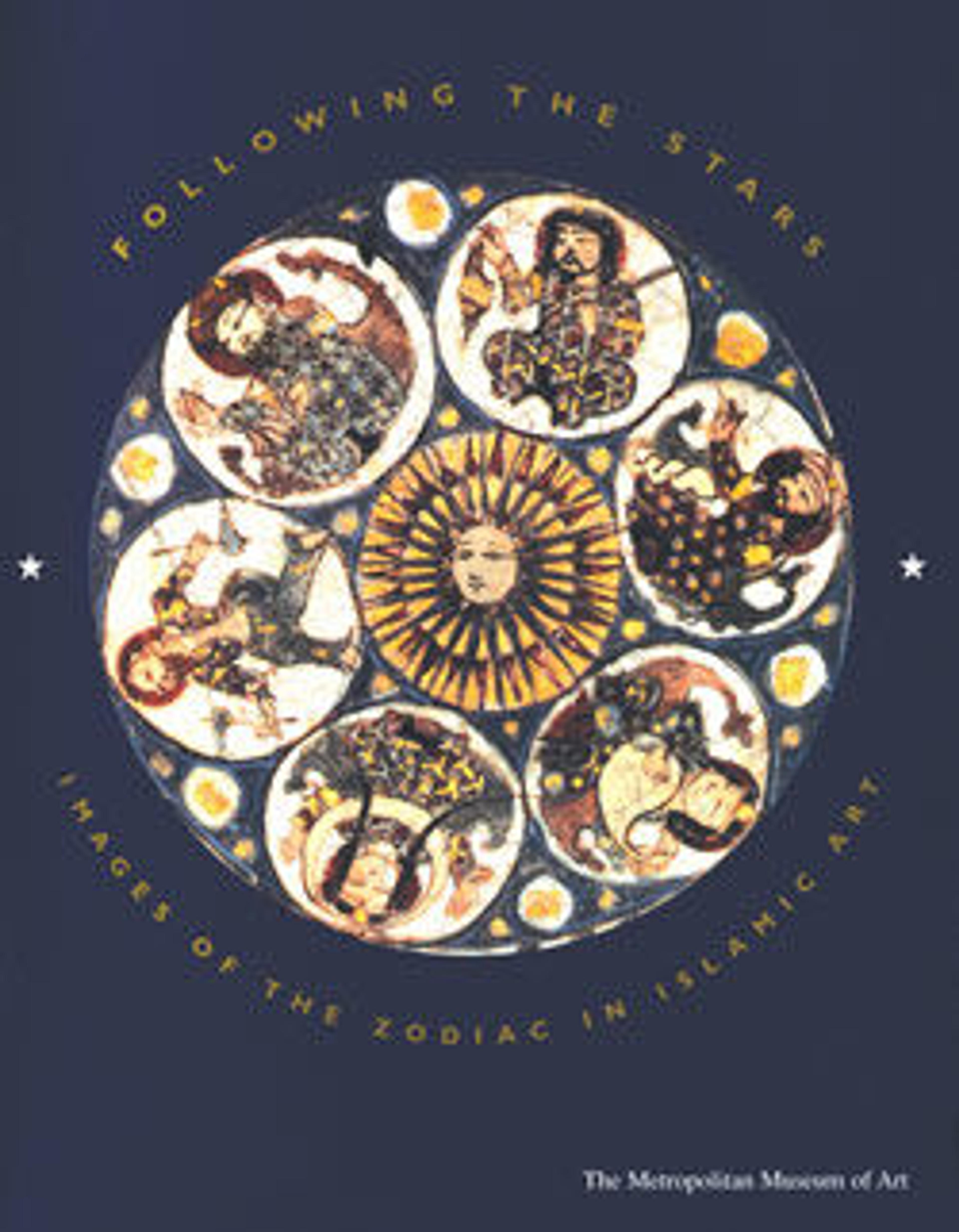Folio from a Mu'nis al-ahrar fi daqa'iq al-ash'ar (The Free Man's Companion to the Subtleties of Poems) of Jajarmi
This page from an anthology of Persian poetry illustrates a poem about the moon as it enters the houses of all twelve zodiac signs. In the three scenes here, the moon is shown visiting Gemini, depicted as two youths with joined, reptilelike tails, then in the house of Cancer, a large, scaly crab, and finally seated next to the lion of Leo.
Artwork Details
- Title:Folio from a Mu'nis al-ahrar fi daqa'iq al-ash'ar (The Free Man's Companion to the Subtleties of Poems) of Jajarmi
- Author:Muhammad ibn Badr al-Din Jajarmi (Iranian, active 1340s)
- Date:dated 741 AH/1340–41 CE
- Geography:Made in Iran, Isfahan
- Medium:Ink, opaque watercolor, and gold on paper
- Dimensions:H. 7 1/2 in. (19.1 cm)
W. 5 in. (12.7 cm) - Classification:Codices
- Credit Line:Rogers Fund, 1919
- Object Number:19.68.1
- Curatorial Department: Islamic Art
More Artwork
Research Resources
The Met provides unparalleled resources for research and welcomes an international community of students and scholars. The Met's Open Access API is where creators and researchers can connect to the The Met collection. Open Access data and public domain images are available for unrestricted commercial and noncommercial use without permission or fee.
To request images under copyright and other restrictions, please use this Image Request form.
Feedback
We continue to research and examine historical and cultural context for objects in The Met collection. If you have comments or questions about this object record, please contact us using the form below. The Museum looks forward to receiving your comments.
